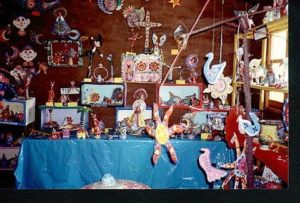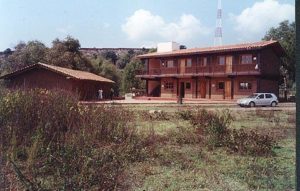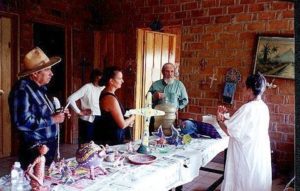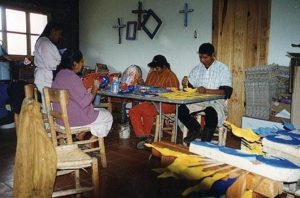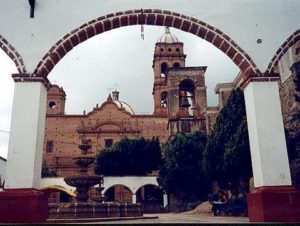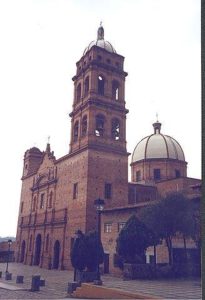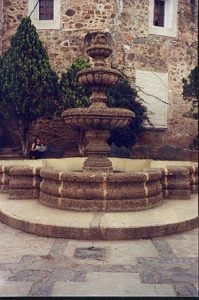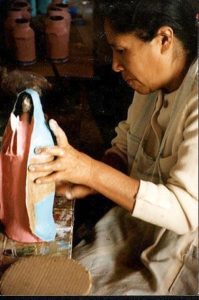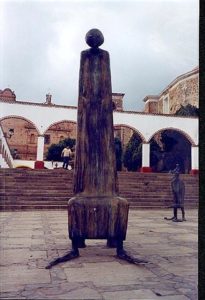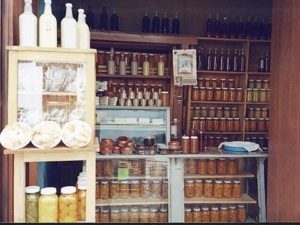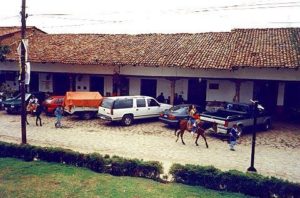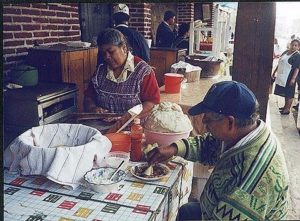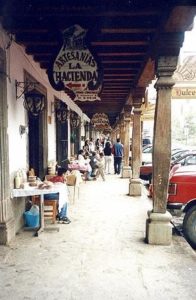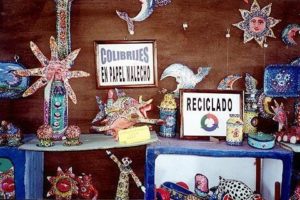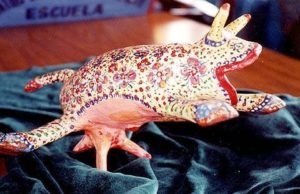Gallery: Tapalpa: Land of colors
Tapalpa is an alpine town south of Guadalajara. Surrounded by forests, lakes and streams, Tapalpa beckons visitors to its restful landscape. One winter weekend, as my van snakes up the Sierras, I stare at the valley falling away… fast.
At 2200 meters above sea level, it is no wonder that Tapalpa has been the host of Mexico’s Open Paragliding Championships. However, since the highway is smooth and the traffic light, I enjoy the spectacular view.
Upon reaching the plateau above, the highway meanders through the hills. Wooden recreation homes dot the countryside. Roadside signs announce ‘comida campestre’ or country cooking. Tables and chairs beckon from outdoor restaurants. It is Saturday morning.
The spring in the center of Tapalpa is the main reason for the town’s long habitation. The name, Tapalpa, comes from the náhuatl word, ‘Tlapalpan’, meaning the land of colors. The indigenous people used the polychromatic mineral earth in the pigmentation of cloth.
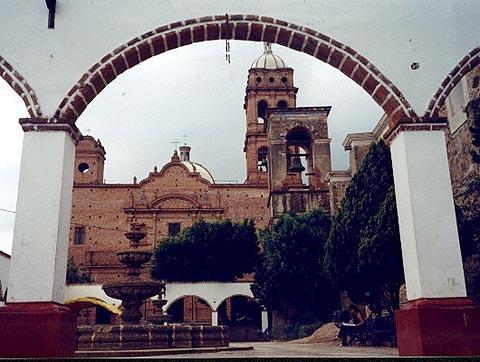
In the town’s center I wander in and out of wooden portals, among centuries of colonial architecture. Three restored churches stand in the heart of Tapalpa. The towns’ red-tiled roofs, white washed wooden columns, balconies and beams are enchanting.
In the main plaza or jardin principal, benches invite lingering. Children ride by on rented donkeys and horses. Around the plaza, wooden signs with old-fashioned script announce crafts, candies, cheese and pharmacies. I enjoy a drink in an outdoor café and scan for a posada across from the plaza.
Pine resin and wood smoke scent the air. Stacks of kindling suggest cool nights. Some stores offer cajetas, milk and sugar desserts served in small wooden boxes. Others display colorful stands of home canned fruits and preserves like the apple marmalade, pegoste. Still others include pickles, honey and ponche. This local wine is made from tropical fruit and nuts including pomegranate, guava, almond, peanut and coffee. Fresh dairy products are for sale everywhere. Outside, the savory aromas of birria and pozole waft from street stalls around the corner from the Templo San Antonio.
Tapalpa is a haven for artists. Is that why some seats resemble sculptures of friendly aliens? During this weekend there is an art show by famous Talavera ceramic artist, Jesus Guerrero Santos, a symphony concert in the Templo San Antonio, a wedding in the same church and a fireworks display in the evening.
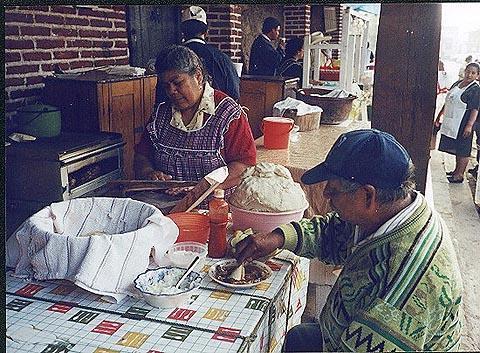
Later that evening I meet the Villalevers, a couple from Guadalajara who have built a unique school in Tapalpa. Centro de Integración is dedicated to nurturing the artistic, creative and academic potential of special-needs children. With the aid of volunteers from the town and donated land, the Villalevers have helped transform the lives of three hundred students. Before the construction of this school many of these children felt apart from the community. Now they an integral part and are proud to be child artisans.
Creative teacher Marcos Canizále guides them in expressing their dreams and beliefs into Papelmalecho, papier maché over recycled garbage. The students paint their magical creations in the traditional folk style of ‘florapintura’ or flower painting. The inexpensive crafts are for sale at the school. Visitors and volunteers are welcome Mondays through Fridays. Contact school director Patricia Villalever at (333) 432-0570. (See also article on Papelmalecho & El Centro de Integración)
The countryside around Tapalpa holds other attractions. In the Valley of the Enigmas, sit the colossal Piedrotes, an odd outcropping of volcanic rock, seven kilometers from town. Ten kilometers outside of town, in a village called ‘La Barranca De Refugio, El Salto de Nogal plunges 105 meters. Near the waterfall, crumble the ruins of ‘Taberna’. Here the mezcal, “Barranda’ was produced until the middle half of the last century. Seven huge stones that once ground wheat lie silent. The millstones were destroyed after fifteen days of continuous flooding in 1917. A guide is recommended for visiting the waterfall.
Near the ruins of the Tula ironworks lies a formidable canyon. Hiking trails crisscross the hills and travel around small lakes. When Guadalajara gets hot in the valley below, people flock to the fresh water and air.
In the mountain town of Tapalpa, much has passed… cultures, armies, industries…like the ruins of Fábrica de Papel, one of the first paper factories in the Americas still refusing to let go of its adobe bricks.
Still… Tapalpa offers the visitor much in the present…pleasant lodgings, local treats, crafts and cultural events. Above all, people who extend a warm welcome to their tranquil town in the mountains.
HOW TO GET TO TAPALPA
Tapalpa is 90 minutes from Guadalajara, Jalisco. Take the Highway to Colima, and take a right turn at the intersection at the toll free road to Colima. At 34 km turn towards Acatlán de Juárez and take the Hwy. 54 old highway south. At 44 km the road bears right towards Talpalpa. By bus, leave from the Central Camionera in Guadalajara for Tapalpa. The bus leaves and returns several times a day.

